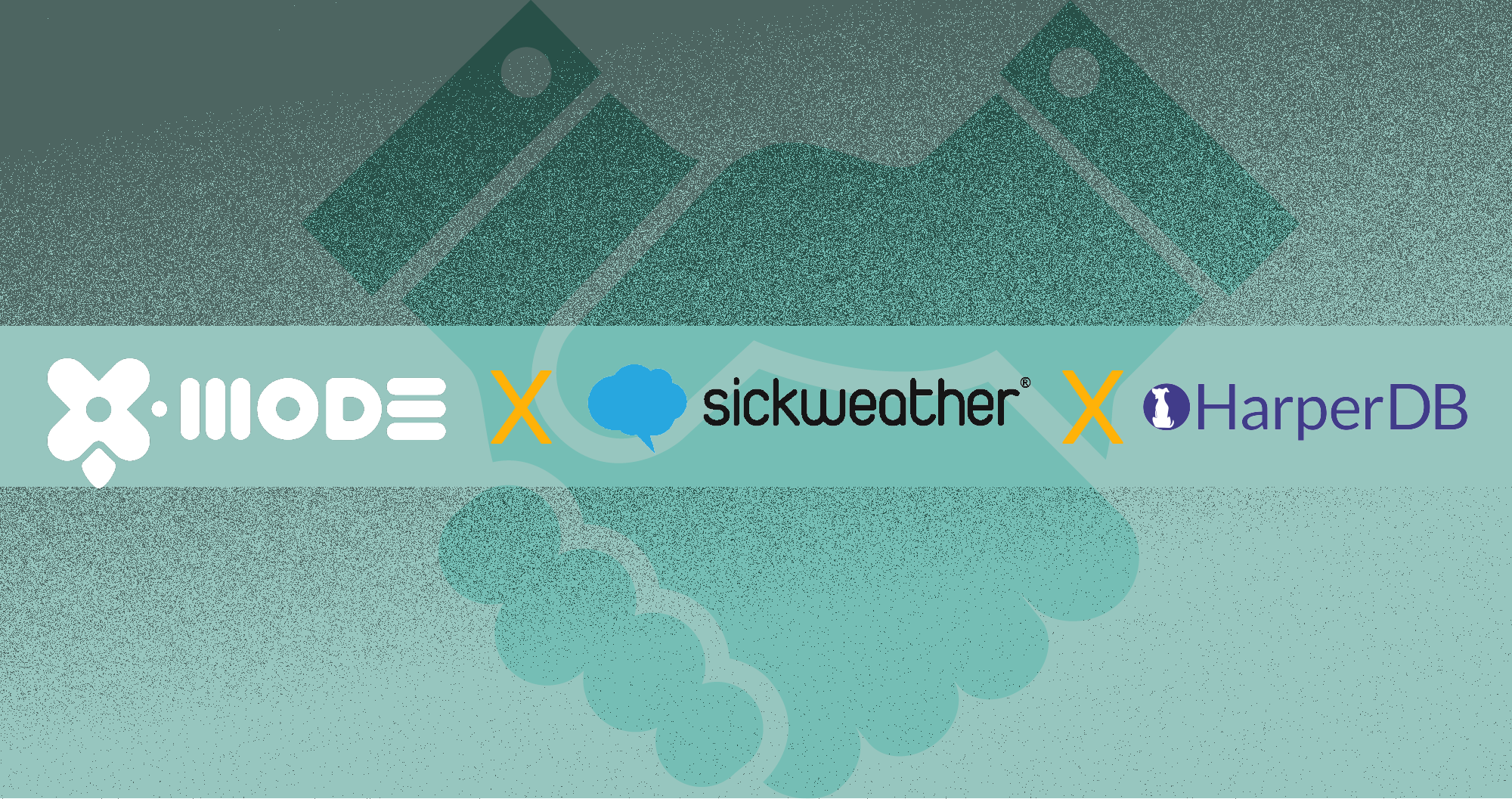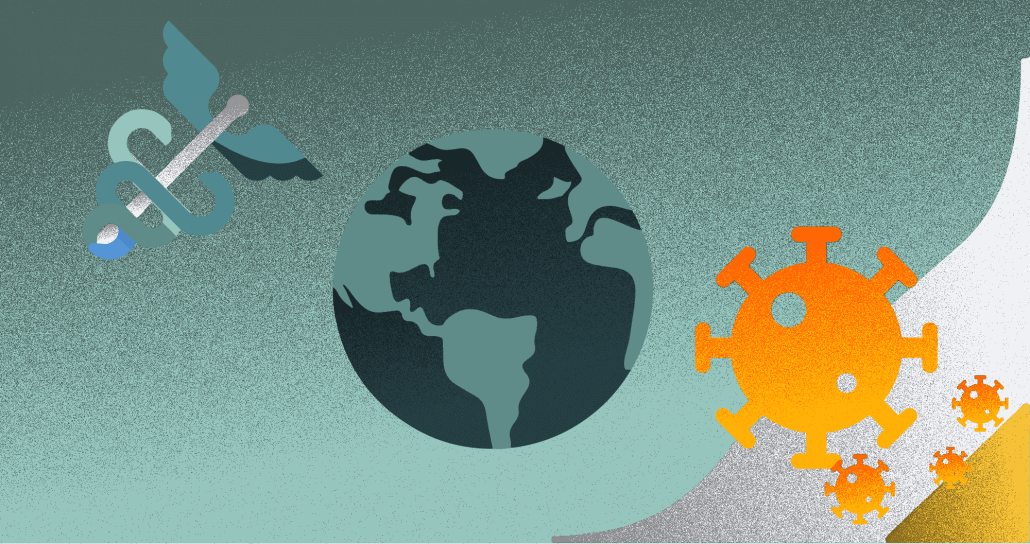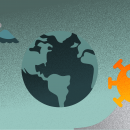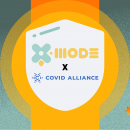Location Data For The Cure: X-Mode Teams Up With SickWeather, HarperDB for COVID-19 Response
Announcing a new collaboration between SickWeather, HarperDB, and X-Mode to leverage location data to combat COVID-19.
By Joseph Green
In times of crisis, some things become more important than the bottom line. X-Mode has spent the last few months working to leverage our technology and solutions to help fight the spread of COVID-19. Sometimes this means working pro bono, foregoing direct profit in order to contribute to the common good.
But it also means that we have been able to connect with all sorts of organizations that are also working to make a difference. If X-Mode had not made COVID response a priority, we may have never connected with SickWeather and HarperDB; as it is, we are pleased to announce a collaboration between the three companies — originally to respond to a Small Business Request from the US Air Force. The partnership has proven fruitful, with all three companies providing a crucial piece to create a COVID-19 solution greater than the sum of its parts.
I sat down last week to talk with representatives from both SickWeather and HarperDB. Below is my conversation with Stephen Goldberg (CEO of HarperDB,) Mark Hardy (Vice President, Solution Delivery,) Laurel Edelman (CEO of SickWeather), and Dr. Kevin Payne (Lead Data Scientist at SickWeather). We discussed their companies’ history, as well as how they have responded to the COVID crisis. Read on to learn more!
J: Thank you all so much for joining me today! First off, I’d love to hear a little bit about each of your companies, and what you do.
Stephen Goldberg (HarperDB): HarperDB is an application that handles distributed data management. Before founding this company, our team had been working together at three different companies over about ten years. We acquired a lot of experience doing analysis on social media during major events; The Superbowl, The World Cup, Beyonce concerts… events where we would end up processing about 250,000 interactions per second. We founded HarperDB with the goal of helping clients achieve complex data analytics in a simpler, more budget-friendly way. The complexity of the tools is internalized by our company, then the interface is presented to the developer and engineer clients in a fairly simple form. Again, our goal was to make these high level analytics available to engineers at any experience level or budget.
Laurel Edelman (SickWeather): SickWeather is the world’s only hyperlocal illness prediction tool. The company started with three co-founders who realized that unlike the weather, where you can turn on the TV and see that there is X percent chance of rain, there was no way to know whether you’d run into someone who was ill when you left your house. This was important to our co-founders from a personal standpoint; one had five kids, and wanted to make sure his family was safe; another had a mother who was undergoing breast cancer treatment and so was immunocompromised.
SickWeather now tracks 28 different diseases or vectors of illness. Everything from Influenza and Chickenpox, to mosquitoes and lice that can cause disease. We do that using models we have created, based on data collected through social media since we went live in 2011 (we went commercial in 2015.) Our mission is to stop the spread of illness. We make available free apps on the iOS and Android app stores, so people can see the illness risk in their area — what we call the sick score. Kevin, do you want to talk a little bit about the patents we’ve developed?
Dr. Kevin Payne (Sickweather): Thanks Laurel. SickWeather has had a really great team over the years, and we’ve developed some really elegant proprietary algorithms and data processing procedures that allow us to predict illness from social media, as well as from proprietary reports from our applications. To meet the needs of various clients, we have also rolled in other data sources — including location data from X-Mode!
SickWeather holds a couple patents. The first is the patent on extracting the signal of what is actually going on health wise in a community, based on social media. There are a lot of conversations on social media that are kind of on the edges of health. What we do is we take all of the possible conversations and pull out the ones that are actually saying “I am sick,” or “ someone close to me is sick.” We are pulling out the actual signal from all the noise. Our second patent, which has become really relevant in the world that we live in, has to do with integrating location data into the overall SickScore.
SickWeather has a set of offerings: first of all we have our overall SickScore, which takes into account all 28 diseases we track, including now of course COVID-19. We’ve got almost 3 months of data on COVID now, so we’re able to track its spread on a local level, nationally, and also worldwide. We can also take that Sick Score, and tailor it to a specific set of conditions. So if you’re only interested in flu, or allergy symptoms, or COVID-19, then we can refine the SickScore just to focus on that. In our new mobile apps which are now under review, you’ll get COVID-19 scores locally for your area.
We also do forecasting based on these data. Over the last several seasons, SickWeather has really done an amazing job on, say, predicting the shape of the flu season. So we can run a projection on the flu fifteen weeks out that correlates over the 0.9 point nationally. It’s a little lower than that on the local level, but still we’re talking fifteen weeks out. That’s remarkable.
Beyond these core products, we can take the SickScore and the SickWeather forecast and tailor it to specific organizational needs. Say for example, demand forecasting for medical products. Or, the likelihood of symptoms within a particular area for advertising targeting purposes. We can forecast absenteeism for large organizations… because there is such a wide variety of ways that our health environment impacts organizational decisions and agency decisions, SickWeather has a unique place in strategic planning. We can provide health-based guidance that companies and even governments really need.
J: What has SickWeather done specifically in response to COVID-19?
K: So one thing that we started noticing was that in January, our predictions for the flu started looking different than they have in the last few seasons. Normally we see a natural peak of the flu, and then it trails off. But what we were seeing from our models was that there was no indication of a trail off of flu-like symptoms. We entertained the possibility that we might be picking up on COVID-19, but all we were willing to say officially at the time was: flu-like symptoms were going to continue at a higher rate throughout the summer, and not see the normal drop-off.
L: Exactly, and that’s very unusual. So based on these results we started to track mentions of COVID-19 in addition to the other illnesses we track on social media. Now, every time we start tracking a disease, we create a proprietary library of terms people might use when discussing the virus. This includes positive key-words, but also negative ones; for example, if someone mentions “Bieber Fever” on twitter, that does not get included in a fever diagnosis for the flu. So we created a proprietary library for COVID-19, and with that we started looking at social media for mentions. We also created the ability for people using our apps to report whether they have COVID symptoms. This allowed us to start creating the COVID score, and to start forecasting.
When we started reporting and forecasting, we also included state level information in addition to our own algorithms. Epidemiologists like to use three years of data to state definitively they are tracking a pattern, so what we are doing is a very early detection system. But it also holds its own against all of the official projections and reports.
K: I just want to add a note to underscore the uniqueness of our offering. Every other projection that is out there for infectious disease uses reported cases as the core data. And that’s of course a really crucial metric. However, we are tapping into another aspect of what’s going on, and that is: when we get sick, or the people around us get sick, we tend to talk about it. And if we can tap into that conversation, then we can pick up on an early signal. That makes us a unique and independent source of information about environmental and health conditions.
J: So are you saying that SickWeather can provide data that the CDC cannot?
K: Well, we’ve validated this over numerous flu seasons with comparative CDC data. And we know that what we are predicting in real time, fifteen weeks out during a flu season, correlates at a 0.9 level or above with CDC data nationally. And this is based on data that they have collected, cleaned, and verified AFTER the infection has passed. In other words, the picture we are giving in real time is as accurate as the post-mortem that we get from the official channels. And that is pretty cool. We have no reason to believe that our methods — which have been verified time and again with the flu, with allergies — are not working with COVID.
J: what role can quality location data, like that provided by X-Mode, play in what SickWeather is doing right now?
L: That is really crucial with this next generation platform that we have started to build, which integrate real time location data. With our current ecosystem of apps, we’ve only got about half a million devices opting in and sharing location. What X-Mode does is give us 350 million new devices. So, let’s say a local health agency wants to use the SickWeather app to help plan their response to the virus. So when people are diagnosed with COVID, they download the SickWeather app and report their diagnosis — which reporting is secure and anonymized, of course, so it’s not tied to an individual but just shows the area of infection. Then when we mix in X-Mode data, we can show other devices, not on our platform, which were also exposed to infection. Then we can show where those devices traveled and potentially spread the virus. X-Mode’s data opens up a wealth of opportunities to fine tune policy interventions and medical response as the disease is spreading in real time.
J: Now, let’s talk about the project that HarperDB, X-Mode, and Sickweather are working on together. I understand this was in response to an open request from the US Air Force?
L: This was an open submission to a Small Business Request from the Air Force. There were four pillars that they wanted companies to meet with their solution. These were: social media analytics, adware proximity algorithm, a self-reporting mobile app, and then finally an enterprise tool that can scale the data. With the partnership between X-Mode, SickWeather, and HarperDB, we met all of those requirements easily.
S: The reason the three companies go together was to put 100% of these requirements — which all of us met separately — into a single solution. Once we started working together though, we realized that this solution has applications across a lot of industries. That includes the military of course, but also anyone who wants to predict and track the spread of a disease across their organization. We can think of supply chain management; concentration of food workers; construction sites… This has a lot of bearance, and it may have been created for the AirForce, but it also has a lot of reach across different industries.
J: So it sounds like the three companies will be working together a lot more in the future.
S: Absolutely, that’s the hope! We’ve put our heads together to create more workflows for different industries, applications for other Small Business Requests… the team works really well together, and now we’re just waiting for the clients to jump on board.
J: I want to ask this last question to everybody. During the Pandemic, a lot of data companies have risen to the call and created some really relevant tools for tracking the virus and preventing its spread. At the same time, people still have a lot of concerns about privacy and the power of big data. How do you all think the industry is going to proceed after the pandemic?
L: I’ll speak up first. SickWeather is GDPR compliant and privacy is a huge concern of ours, as I know it is with all of the companies involved. When people report their diagnosis on the SickWeather app, or share their device location, they are opting in. And what we have found is that when people realize that their data is being used to help their own community, their school or their neighborhood, they want to share that data to help the greater good. I mean if you think about it, we naturally have these conversations in our communities. “My kid has the chickenpox,” or “my kid has head lice.” The fact that our application is built around these natural community concerns makes people a lot more willing to share information with us.
In terms of privacy: what we have done, and what we will continue to do, is respect the rights of people to know how their data is being utilized. I don’t feel that people’s privacy concerns will go away. I think it’s on us to explain to people how their data is being used, and inform them on the bigger picture, while still keeping privacy forefront. Privacy concerns are not going to go away after the pandemic. What we might see is the industry being more transparent about the ways they use data.
S: One of the values that HarperDB is bringing to this use case is that we really help with that balance between performing valuable analysis and preserving privacy. Because of our storage algorithm and distributed computing architecture, you are actually able to physically secure data while also performing analytics on it. This gives SickWeather the ability to keep on performing analysis as they grow while keeping privacy intact.
Mark Hardy (HarperDB): I will say that beyond the technology, all three companies are completely complementary. We share a common vision, which is not just to generate profits for the shareholders but to help with issues such as this global pandemic. I’m really happy this team came together, so that we can build solutions to help the world recover and not have the same issues moving forward.
During this time of global crisis, we all must come together in order to survive. Check out our past blog posts on COVID-19, and stay tuned for future updates. If you think you or your organization could use location data to help fight the virus, check out our free ADX offering today.







